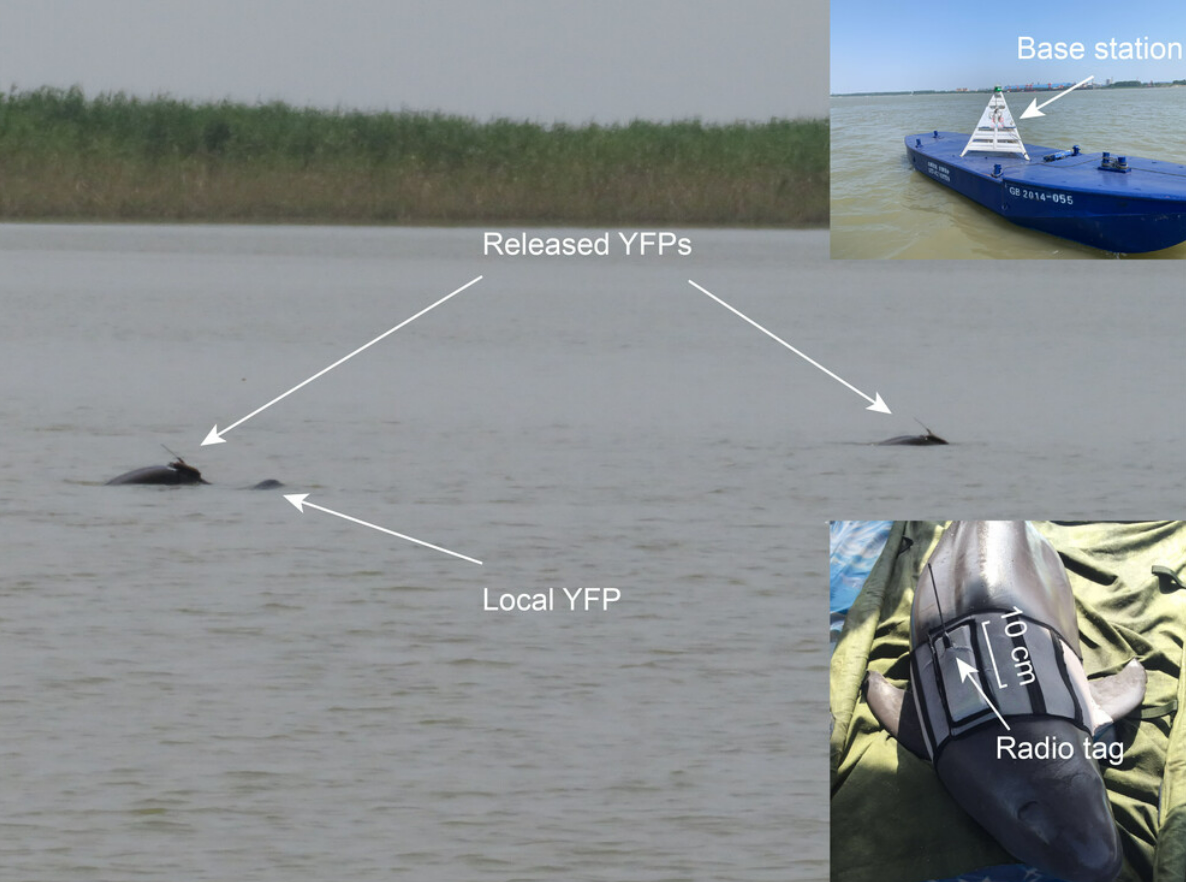Two Yangtze finless porpoises have been returned to the wild for the very first time, offering fresh hope for this deeply troubled species.
The Yangtze finless porpoise (Neophocaena asiaeorientalis asiaeorientalis) is the world’s only freshwater porpoise, known for its cute “smiley” face and marvelous melon-shaped head.
Native to the Yangtze River system in China, the population has suffered a catastrophic decline since the 1970s. Entanglement in fishing gear is a big issue, but the main problem is the degradation of their natural habitat, which is impacting many of the river system’s wild inhabitants.
Precise estimates of their population health vary, but a 2022 survey suggested there were around 595 finless porpoises in the mainstream of the Yangtze River, 492 in Poyang Lake, and 162 in Dongting Lake. It’s no surprise, then, that they’re listed as a critically endangered species.
Given their dire straits, the Chinese government and scientists have been keen to find ways to boost the wild population.
In a new study, researchers from the Institute of Hydrobiology at the Chinese Academy of Sciences started by capturing two male Yangtze finless porpoises from Tian-e-Zhou, which is beyond their natural habitat.
The pair were given a thorough health check, implanted with ID chips, then relocated to a protected section of the river’s Laowan Branch, where they spent two years acclimating to their new habitat. Throughout this time, researchers kept a close eye on how they moved and hunted for fish.
Once they were confident that the pair could thrive on their own, the researchers prepared to return them to the wild. On April 25, 2023, the two porpoises were released into the upstream waters near the Laowan Branch.
Amazingly, within just three days, they had already joined up with a local porpoise and ventured into the heart of the region’s core population.

Two released Yangtze finless porpoise were photographed with a local individual on the third day post-release.
“Cetaceans possess complex cognitive abilities and sophisticated social behaviors – characteristics equally observed in Yangtze finless porpoises, which formed a key focus of our post-release monitoring,” Dr Jiansong Qiu and Dr Zhigang Mei, two scientists involved in the recent porpoise project from the Institute of Hydrobiology at the Chinese Academy of Sciences, told IFLScience.
“Wild porpoises typically form small groups of 2 to 5 individuals, meaning the acceptance of released individuals by resident groups could be critical to their survival. We therefore conducted continuous tracking near the release site for several days using combined passive acoustic monitoring and visual observations, only confirming successful integration when released individuals were acoustically detected or visually observed associating with wild groups, at which point we concluded they had adapted to the wild environment,” they added.
The study concludes that this project is a “significant advancement in the conservation” of the struggling species and could offer renewed hope for their population recovery.
It might also be a promising indication for the future of the broader Yangtze River system, a stressed ecosystem that’s holding onto a wonderful array of biodiversity and acts as an important lifeline for many humans.
“From an ecological perspective, the Yangtze finless porpoise is the world’s only freshwater porpoise (sub)species and serves as a flagship indicator for the health of the Yangtze River ecosystem. Its population decline mirrors the degradation of the entire river basin, with cascading effects throughout the Yangtze’s biological community,” the researchers explained.
“From socio-cultural perspectives, the Yangtze finless porpoise not only symbolizes China’s natural heritage but also engages public affection through its characteristically ‘smiling’ facial features. Much like the giant panda serves as China’s global cultural ambassador, we envision this porpoise becoming an iconic representative of the Yangtze River basin,” they concluded.
The study is published in the journal Biology Letters.
Source Link: Two Yangtze Finless Porpoises Have Been Returned To The Wild For First Time In China